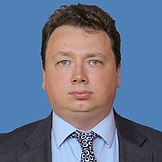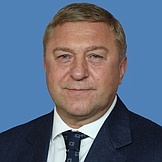Regional flags and emblems


PROFILE
Established 7 April 1946
Capital Kaliningrad
The Kaliningrad Region is part of the Northwestern Federal District
Area 15,100 sq km
Population 1 033 100 (2025)
Ethnic groups
(2020 National Census, %)
Russian – 91,30
Ukrainian – 1,41
Belarusian – 1,28
Other – 6,01
Administrative divisions (2024)
Municipal districts – 12
City districts – 10
Geography and climate
The Kaliningrad Region is the most western Russian region. The Baltic Sea and its gulfs touch the region’s shores. Almost the entire region is lowlands (0–231 m above sea level) with the Baltic Ridge (up to 231 m) in the southeast. There are dunes on the Curonian and Vistula spits (up to 60 m).
At its widest points, the region is 205 km from east to west and 108 km from north to south.
The region borders Lithuania and Poland. It is located 650 km away from the European part of Russia, separated by Lithuania and Belarus.
The region has 339 streams, 945 inter-farm drainage channels, 150 ponds and lakes, and 239 swamps. The Neman (with its tributary the Sesupe River) and the Pregolya (with its tributary the Lava River) are the largest rivers, and Lake Vistytis is the largest lake.
The climate is transitional from a sea climate to moderate continental. The average January temperature is –0.1°C, and the average July temperature is +20.2°C. The average precipitation level in January is 79 mm and 94 mm in July. The frostless season lasts 180 days.
The most common trees include pine, fir, oak, maple and birch, with fir prevailing.
Turfy soil, podsolic soil and swamplands with transitional variations are prevalent.
The region is home to Curonian Spit National Park, Vishtynetsky Regional Nature Park, 12 state nature sanctuaries, and nine regional natural landmarks.
Government
The legislative branch is represented by the Regional Legislative Assembly, which is the permanent, representative and only body of legislative authority in the region.
The Legislative Assembly has 40 deputies elected for five years, with 20 of them running in single-member constituencies and the other 20 in the single electoral district, where winners are identified in proportion to the number of votes cast for lists of candidates nominated by electoral associations.
The current Legislative Assembly was elected in September 2021. The term expires in September 2026.
The executive branch is represented by the Governor of the Kaliningrad Region, the Government of the region, and other bodies of the executive authority.
The Governor of the Kaliningrad Region is the region’s highest-ranking official, who runs the executive branch in the region. He is elected for a term of five years by Russian citizens who permanently reside in the region. The term of the incumbent Governor expires in September 2029.
The Government of the Kaliningrad Region is the supreme and permanent body of executive authority, formed by the Governor of the Kaliningrad Region.
Economy and natural resources
Industrial production accounts about 30% of Kaliningrad Region’s regional GDP.
The manufacturing sector includes the transport machinery, shipbuilding, ship-repair, car assembly, construction materials, pulp-and-paper, wood processing and furniture industries.
Fishing plays a special role in the food industry.
Agriculture accounts for over 5% of the regional GDP. Cereals (rye, grain, barley and oats), legumes, oil crops, potatoes and vegetables are the main crops, while dairy, meat and eggs are the top products in livestock farming. The region is a traditional leader in Russian fur production.
The main types of soil are turfy soil, podsolic soil and swamps with transitional variations, with podsolic soil most common. Most soil is cultivated and needs drainage (almost 90% of all arable land is drained).
Turf, rock salt, brown coal, clay, construction materials, mineral waters and therapeutic muds are the main natural resources.
About 90% of the world’s amber reserves are located in the region, with Palmnikenskoye and Primorskoye being the largest deposits.
There are oil fields as well as deposits of turf, coal, non-metallic minerals, rock and potassium salts, sapropel, glauconite and construction materials (11 deposits of sands, 10 deposits of clay, and gravel and sand mixtures).
Culture and tourism
Tourism is a development priority stipulated by the Kaliningrad Region’s long-term socioeconomic development strategy.
The Kaliningrad Region is a promising Russian region for inbound and domestic tourism. Favourable and diverse nature, unique water resources, balneal resorts and many historical and cultural landmarks play an important role in making the region competitive in the Baltic macro-region.
As of today, the Kaliningrad Region has created unique conditions to treat and prevent cardiovascular, oncologic and many other diseases. Svetlogorsk-Otradnoye and Zelenogradsk are the main health resorts.
The Kaliningrad Region’s health resorts have over 3,000 rooms in total. Their services are very popular all year round. In recent years, the existing hotels have been actively adding spa centres. Medical tourism based on amber therapy is developing, too. There is also a federal cardiovascular surgery centre, whose patients can recover at health resorts located along the coast.
The region’s rich historical and cultural heritage has great significance for tourism development. It includes Middle Age castles (19), churches and fortresses (63). In total, 1,660 sites are protected as federal, regional and local historical and cultural heritage. There are over 100 museums in the region.
The Kaliningrad Region has unique natural ecosystems that encourage environmental tourism. There are over 60 guesthouses and tourist compounds in rural areas that work all year round.
The world’s only amber production and processing centre in the village of Yantarny – the Kaliningrad Amber Plant – is one of the most popular tourist sites.
Water tourism, including sports tourism (sport fishing), is a very promising kind of tourism due to the unique location of the region. The Kaliningrad Region has a wide network of waterways, including access to the Baltic Sea and two gulfs (Curonian and Vistula spits). There is the potential to develop cruise tourism and routes in the region’s internal waters.


